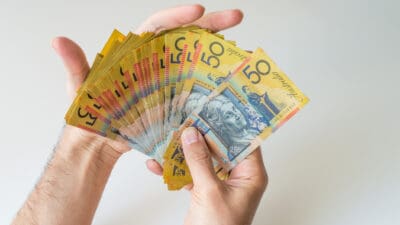Passive income is one of the most pleasing things about ASX shares. Investors can use ASX stocks to gain $1,000 of passive income a month and perhaps more.
There are a variety of different ways to gain passive income, and we can find them on the ASX. Each of these methods can create income, though I'd suggest ASX companies will deliver the biggest yields.
Interest from cash
Typically you would have to go to a bank or credit union to get a financial product that pays interest from a cash deposit. But, on the ASX, there's an option that takes investor money and spreads it across a number of term deposits at financial institutions in Australia.
Betashares Australian High-Interest Cash ETF (ASX: AAA) is the ASX investment that does just that. Its bank holdings include National Australia Bank Ltd (ASX: NAB), Bendigo and Adelaide Bank Ltd (ASX: BEN) and Bank of Queensland Ltd (ASX: BOQ).
The ETF pays the income monthly. At the moment, the interest rate is 4.45%.
Bonds
Owning bonds can be another form of passive income. Bonds are basically debt from a government or business. The borrower pays interest to the investors.
While investors can probably get a higher return from bonds focused on businesses, I'd prefer to focus on government bonds because, typically, they are safer.
Vanguard Australian Government Bond Index ETF (ASX: VGB) invests in Australian government bonds. The yield to maturity for this was around 4% on 31 December 2023.
Property
Property is a favourite asset class of many Aussies – and we can buy ASX shares that give exposure to property.
Real estate investment trusts (REITs) allow us to buy pieces of a business that have a portfolio of commercial property.
They pay out a large proportion of the net rental profit each year, creating a pleasing source of annual passive income.
I'll mention the yields of a couple of my favourite REITs based on the projected payouts on Commsec.
For example, farm REIT Rural Funds Group (ASX: RFF) could pay a distribution yield of 5.7% and Centuria Industrial REIT (ASX: CIP) might pay a distribution yield of 4.9%.
Shares in ASX companies
One of the best things about ASX companies is that when they pay fully franked dividends, the franking credits boost the yield. For example, a 3.5% normal dividend yield becomes a grossed-up dividend yield of 5%, or a 7% yield can become a grossed-up dividend yield. Investors get the benefit of the credits when they do a tax return.
There are a number of larger ASX shares that have a history of paying sizeable and attractive dividends, such as Telstra Group Ltd (ASX: TLS), Wesfarmers Ltd (ASX: WES) and Coles Group Ltd (ASX: COL).
Some companies have grown their dividends for many years in a row, including Washington H. Soul Pattinson and Co. Ltd (ASX: SOL), Brickworks Limited (ASX: BKW) and Sonic Healthcare Ltd (ASX: SHL).
I'll also point out that listed investment companies (LICs) – which own a diversified portfolio of shares – can make investment returns and pay dividends to shareholders.
One of the most attractive things to me is that companies can both pay good dividends and achieve profit growth as they invest for more long-term growth. For example, Wesfarmers is a much bigger business than it was 15 years ago, and it's paying a much bigger dividend.
Organic growth of dividends means that, over time, companies can deliver higher passive income than interest options and achieve capital growth.
$1,000 per month of passive income
Earning $1,000 per month translates into an annual passive income of $12,000 per year.
It depends on the yield for how much we'd need to make that much. With an 8% dividend yield, it'd take a portfolio value of $150,000.
A 5% yield would need a portfolio value of $240,000, and a 4% dividend yield would take a value of $300,000. But, lower yields may be safer and/or deliver stronger growth over time.
It might take a fair bit of time to reach a portfolio value of those amounts, so investing in ASX shares that could deliver good growth along with dividends would be prudent, particularly for younger Aussies.









